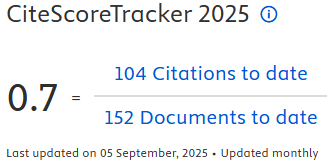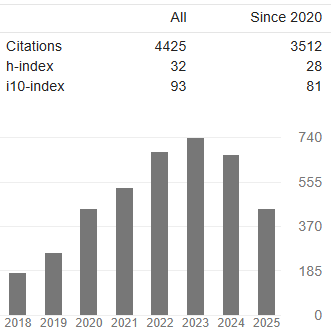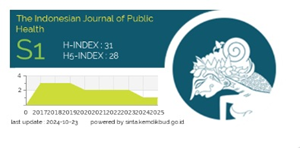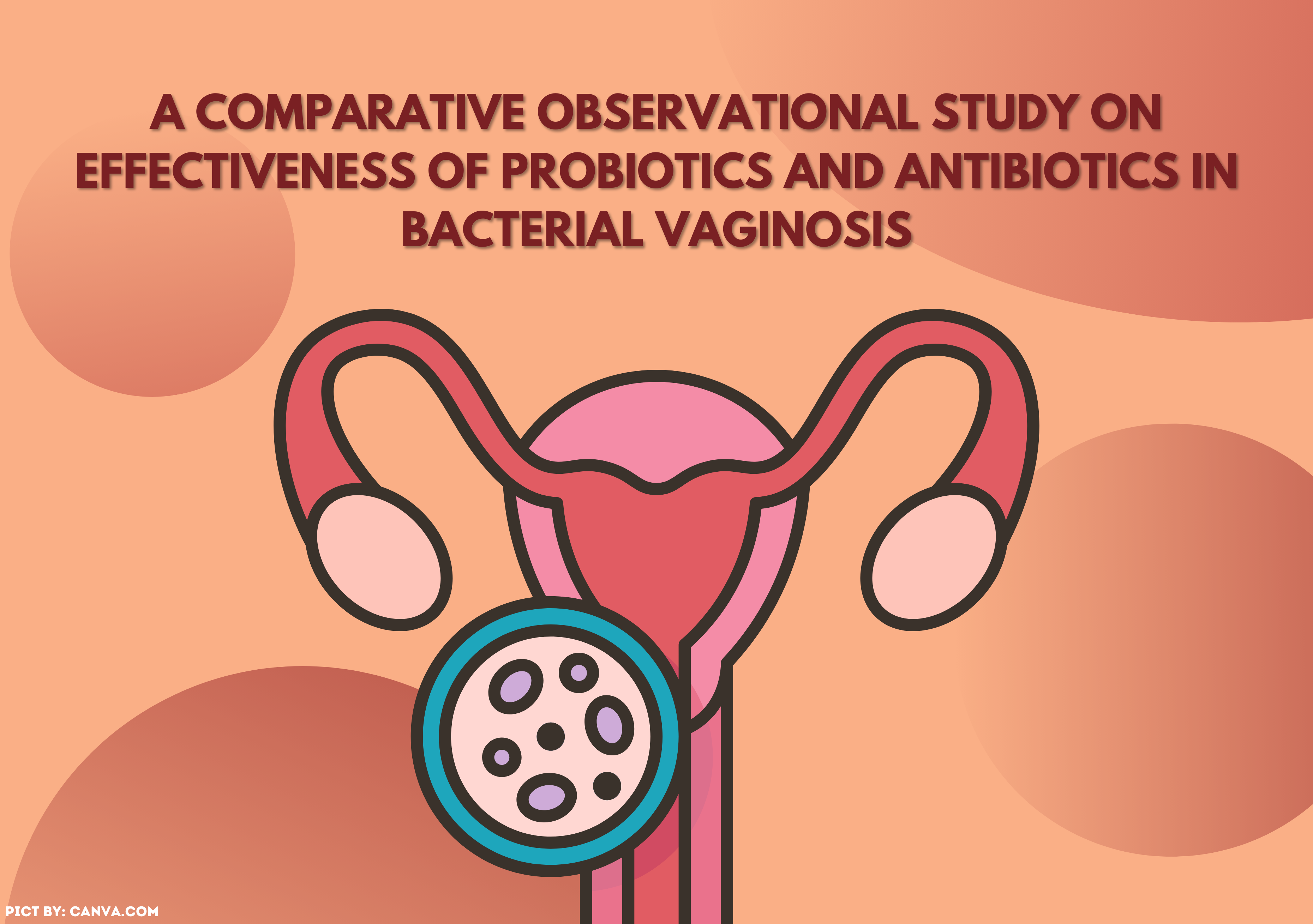THE EFFECT OF SHORT COURSE INTERVENTIONS TO IMPROVE KNOWLEDGE OF POSYANDU (INTEGRATED SERVICE POST) CADRES IN EARLY DETECTION OF STUNTING

Introduction: Stunting is a cumulative growth and development disorder caused by inadequate nutritional intake, recurrent infectious diseases, or both. RISKESDAS data for 2018 recorded a national stunting prevalence of 30.8%, and Dilem Village, Malang Regency, is one of the loci for stunting in Indonesia in 2020. Anthropometry is a growth monitoring method for assessing children's nutritional status and one of the activities at Posyandu, is organized and led by cadres. Hence, it is important to increase the knowledge of Posyandu cadres to achieve the accuracy of children's nutritional status. Aim: The goal of this study was to determine the effect of short course intervention in the knowledge levels of Posyandu cadres in Dilem Village on early detection of stunting and anthropometric measurements of child. Method: The purpose of this study was to determine the effect of short course intervention in the knowledge levels of Posyandu cadres in Dilem Village on early detection of stunting before and after course This study was a pre-experimental study using one group of pre-posttest designs to assess the knowledge of 20 Dilem village cadres for early detection of stunting and correct anthropometric measurements before and after the intervention. Result: The results showed an increase of pre and posttest increase in score 16.5 points (p<0.001). Conclusion: So, it can be concluded that short course intervention can improve cadre's knowledge on early detection of stunting.
Andriani, H., Liao, C. Y., & Kuo, H. W. (2016). Association of Maternal and Child Health Center (Posyandu) Availability with Child Weight Status in Indonesia: A National Study. International Journal of Environmental Research and Public Health, 13(3), 293. https://doi.org/10.3390/ijerph13030293
Basic Health Research. (2018). National Riskesdas Report. Ministry Of Health Republic Of Indonesia.
Beal, T., Tumilowicz, A., Sutrisna, A., Izwardy, D., & Neufeld, L. M. (2018). A review of child stunting determinants in Indonesia. Maternal & Child Nutrition, 14(4). https://doi.org/10.1111/mcn.12617
Brame, C,J. (2016). Effective Educational Videos: Principles and Guidelines for Maximizing Student Learning from Video Content. K.E. Perez.(ed.). CBE”Life Sciences Education, 15: es6. https://doi.org/10.1187/cbe.16-03-0125
Dahodwala, Ma, Geransar, R., Babion,J., de Grood, J., & Sargious, P. (2018). The Impact of the Use of Video-Based Educational Interventions on Patient Outcomes in Hospital Settings: A Scoping Review. Patient Education and Counseling, 101, 2116–2124. https://doi.org/10.1016/j.pec.2018.06.018
Data and Information Center Indonesia. (2018). Stunting in Indonesia. Ministry of Health.Febriani, A. D. B., Daud, D., Rauf, S., Nawing, H. D., Ganda, I. J., Salekede, S. B., Angriani, H., Maddeppungeng, M., Juliaty, A., Alasiry, E., Artaty, R. D., Lawang, S. A., Ridha, N. R.,
Laompo, A., Rahimi, R., Aras, J. and Sarmila, B. 2020. Risk Factors and Nutritional Profiles Associated with Stunting in Children. Pediatric Gastroenterology, Hepatology & Nutrition, 23(5), 457–463. https://doi.org/10.5223/pghn.2020.23.5.457
Hartono, A., Hardiyanti,E.A., Widyastuti,P., Hartono, A., & Gibney, M.J. (2009). Public Health Nutrition. Jakarta: EGC.
Latif, S, Ahmed, I., Amin, M,S., Syed, I., & Ahmed, N. (2016). Exploring the Potential Impact of Health Promotion Videos as a Low Cost Intervention to Reduce Health Inequalities: A Pilot before and after Study on Bangladeshis in Inner-City London. London Journal of Primary Care, 8, 66–71. https://doi.org/10.1080/17571472.2016.1208382
Mediani, H. S., Hendrawati, S., Pahria, T., Mediawati, A. S., & Suryani, M. (2022). Factors Affecting the Knowledge and Motivation of Health Cadres in Stunting Prevention Among Children in Indonesia. Journal of Multidisciplinary Healthcare, 15, 1069–1082. https://doi.org/10.2147/JMDH.S356736
Millward, D.J. (2017). Nutrition, Infection and Stunting: The Roles of Deficiencies of Individual Nutrients and Foods, and of Inflammation, as Determinants of Reduced Linear Growth of Children. Nutrition Research Reviews, 30, 50–72. https://doi.org/10.1017/S0954422416000238
Ministry of Health. (2012a). Instructions for Implementation of Nutrition Surveillance. Directorate of Nutrition, Ministry of Health, Republic of Indonesia.
Ministry of Health. (2012b). Posyandu Cadre Training Curriculum and Modules. Ministry Of Health Republic Of Indonesia.
Ministry of Health. (2020a). Anthropometry Standards for Assessment of Children's Nutritional Status. Kementerian Kesehatan RI.
Ministry of Health. (2020b). Regulation of the Minister of Health of the Republic of Indonesia Number 2, 2020 Concerning Child Anthropometry Standards. Ministry Of Health Republic Of Indonesia.
Ministry of Villages, Development of Disadvantaged Regions, and Transmigration. (2017). Village Pocket Book on Handling Stunting.
Ministry of Villages, Development of Disadvantaged Regions, and Transmigration.
Notoatmodjo. (2012). Health Research Methods. Jakarta: Rineka Cipta.
Siswati, T., Iskandar, S., Pramestuti, N., Raharjo, J., Rialihanto, M.P., Rubaya, A. K., & Wiratama, B. S. (2022). Effect of a Short Course on Improving the Cadres' Knowledge in the Context of Reducing Stunting through Home Visits in Yogyakarta, Indonesia. International Journal of Environmental Research and Public Health, 19(16), p. 9843. https://doi.org/10.3390/ijerph19169843
Supariasa. (2012). Nutritional Status Assessment. Jakarta: EGCG.
TNP2K. (2018). National Strategy to Accelerate Stunting Prevention 2018-2024. National Team for the Acceleration of Poverty Reduction.
Torlesse, H., Cronin, A. A., Sebayang, S. K., & Nandy, R. (2016). Determinants of stunting in Indonesian children: evidence from a cross-sectional survey indicate a prominent role for the water, sanitation and hygiene sector in stunting reduction. BMC Public Health, 16, 669. https://doi.org/10.1186/s12889-016-3339-8
Utami, R. A., Setiawan, A., & Fitriyani, P. (2019). Identifying causal risk factors for stunting in children under five years of age in South Jakarta, Indonesia. Enfermeria Clinica, 29, 606-611. https://doi.org/10.1016/j.enfcli.2019.04.093
Copyright (c) 2023 The Indonesian Journal of Public Health

This work is licensed under a Creative Commons Attribution-NonCommercial-ShareAlike 4.0 International License.
- The authors agree to transfer the transfer copyright of the article to The Indonesian Journal of Public Health effective if and when the paper is accepted for publication.
- Authors and other parties are bound to the Creative Commons Attribution-NonCommercial-ShareAlike 4.0 International License for the published articles, legal formal aspect of journal publication accessibility refers to Creative Commons Attribution-NonCommercial-ShareAlike 4.0 International License (CC BY-NC-SA), implies that:
- Attribution ” You must give appropriate credit, provide a link to the license, and indicate if changes were made. You may do so in any reasonable manner, but not in any way that suggests the licensor endorses you or your use.
- NonCommercial ” You may not use the material for commercial purposes.
- ShareAlike ” If you remix, transform, or build upon the material, you must distribute your contributions under the same license as the original.































